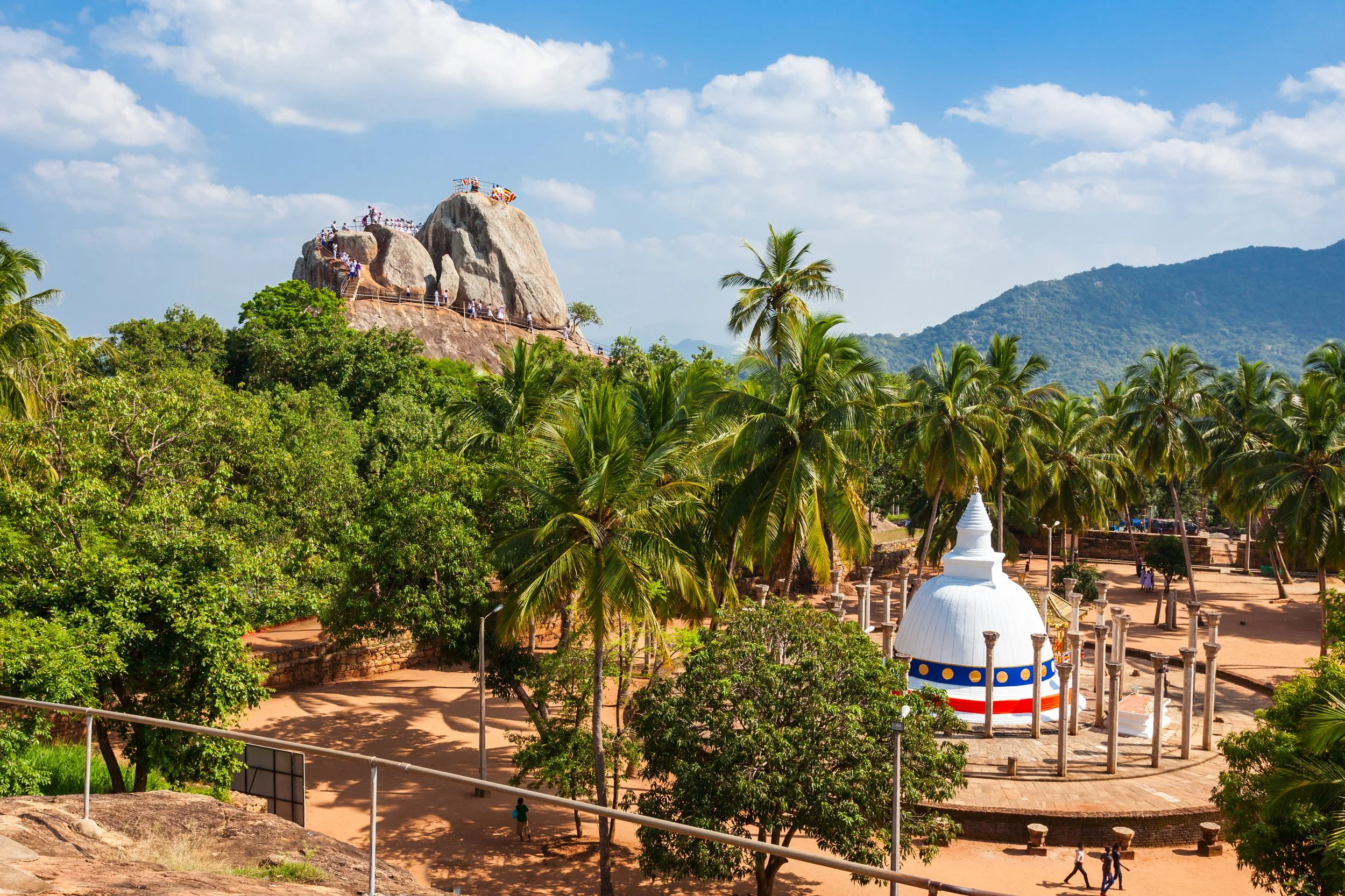Sela Cetiya at Mihintale (S)
At a Glance
This precious stupa, marking the spot where the great Sinhalese king Devanampiya Tissa first met the arhat Mahinda, is said to contain one of the major marks of a Buddha, the “urna."
Click here for map link
Mihintale Raja Maha Vihara is located approximately 12 km east from Anuradhapura sacred city. Sela Cetiya (S) is one of five stupas built within the vihara premises. Legends record that this ceitya marks the spot of Devanampiya Tissa’s first meeting in 247 BCE with the arhat Mahinda. Furthermore, according to the Dhatuvamsa, this stupa contains the “urna”, one of the 32 major marks of an enlightened being.
According to the Mahavamsa, the Sinhalese king of Anuradhapura, Devanampiya Tissa (r. 250–210 BCE), was hunting in the hills of Mihintale. Pursuing a stag to the top of a hill, he suddenly encountered Mahinda, son of the great emperor of India, Ashoka, who had been despatched to convert the people of Sri Lanka to his chosen faith. Wishing first to test the king’s intelligence to judge his fitness to receive the Buddha’s teaching, Mahinda proposed his celebrated riddle of the mangoes:
““What name does this tree bear, O king?”
“This tree is called a mango.”
“Is there yet another mango besides this?”
“There are many mango-trees.”
“And are there yet other trees besides this mango and the other mangoes?”
“There are many trees, sir; but those are trees that are not mangoes.”
“And are there, beside the other mangoes and those trees which are not mangoes, yet other trees?”
“There is this mango-tree, sir.””
Having determined that the king was a worthy vessel, Mahinda proceeded to expound the Buddha’s teachings, quickly convertingthe king and his entourage of forty thousand attendants. In gratitude, the king offered Mahinda and his followers a royal park in Anuradhapura. This later developed into the vast complex of the Mahavihara. Mihintale ( a contraction of Mahinda tale, or “Mahinda’s hill”) likewise became an important Buddhist center
Modern Mihintale is merely a large village, but still functions as an important pilgrimage site, especially during Poson Poya (June). During the festival, thousands of pilgrims dressed in white, gather to make offerings and chant sutras, celebrating the introduction of Buddhism to Sri Lanka.
The sacred sites at Mihintale are less well preserved than those at Anuradhapura, but the pilgrim can appreciate the beauty of the hilltop setting. The walk up to Mihintale can be tiring, however: there are 1850 steps. Thus we recommend that you plan your pilgrimage for the early morning or late afternoon to avoid climbing the steps in the heat of the day.


